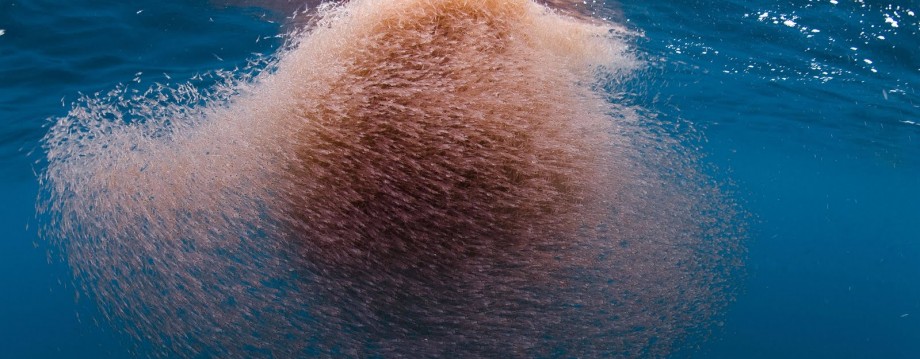All of us on the NB Palmer would like to wish all of you in blog-land a very merry Christmas!
Yesterday we had an incredible day! We went to paradise harbor so that we could safely use the crane to move equipment up to the upper decks for transit. It was one of those perfect summer days here with crystal clear air and bright blue skies. A few of us even got a touch of sunburn. In paradise harbor are tons of penguins! Many many Gentoo penguins scurried around in the snow. Some were sitting on rock nests incubating eggs, others were splashing at the water’s edge and swimming, perhaps hunting for krill. We also caught glimpses of Antarctic Skua’s – predatory birds best known for eating penguin chicks. And of course, we saw a few krill swimming near the coast as well. The mountains are incredible, and the chunks of glacial ice floating in the water were glistening in the sun. It was a wonderful end to what has been a very productive cruise.
We got everything put away and tied down safe for crossing, and in the evening, headed north. We’re headed north with lots of samples to analyze, lots of new data, and new ideas and understanding. We’re looking forward to analyzing everything, and figuring out what it all means. We want to learn the most we can about how Antarctic ecosystems work; with the hope that some of what we learn may help to protect this magical place in the future. The most famous song about my hometown is “I lost my heart in San Francisco” – for me though, part of my heart will always be here in Antarctica.
Christmas morning the ship passed between Smith and Snow Islands and we entered the Drake proper. Everyone is dressed in their most festive attire for the occasion; Michelle is wearing a Christmas sweater, Maria has on a holiday penguin sweater, Iain’s got a musical Christmas tie, Joe is wearing an elf hat, and Caitlyn and I are wearing antlers.
Now that we’re headed for home, there’s not much science to be done. We’re finishing up the last few experiments, and getting things packed away ready to ship back to our labs.
Today we celebrated Christmas with a White Elephant/Yankee Swap. Everyone brought or made a gift, and then picked a number out of a hat. The rules were simple: starting with number one each person picks a wrapped gift from under the tree, or instead of picking a gift they can choose to take one of the opened gifts from someone else. There was much giggling involved. The most popular gifts that swapped hands repeatedly were a hand-made model of our water collecting instrument that Francoise made, a penguin shaped memory stick, and a home-made bottle opener from Matt. One gift that didn’t get swapped much was a pair of lost socks! Someone had left a pair of socks under the desk where we sit to control the MOCNESS, and they had been there for most of the cruise – so Joe wrapped them up as a gift! Ian got a good laugh at the dirty socks all wrapped up nicely.
There’s been much talk of Christmas diner, and Mike has been extra busy in the kitchen for days preparing. Everyone is looking forward to a delicious meal soon!
-

-
rimg1815
-

-
rimg1945
-

-
rimg1950


















Recent Comments